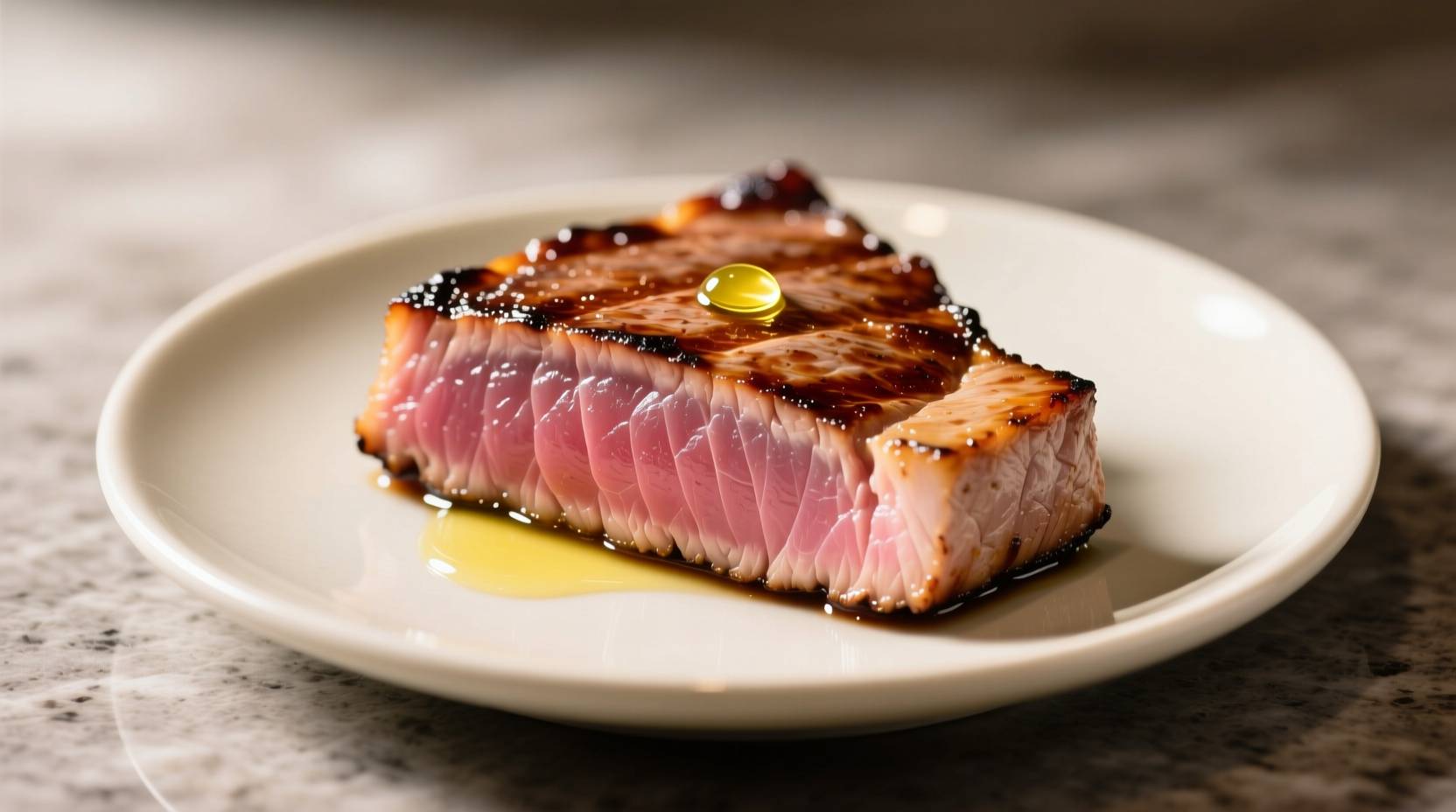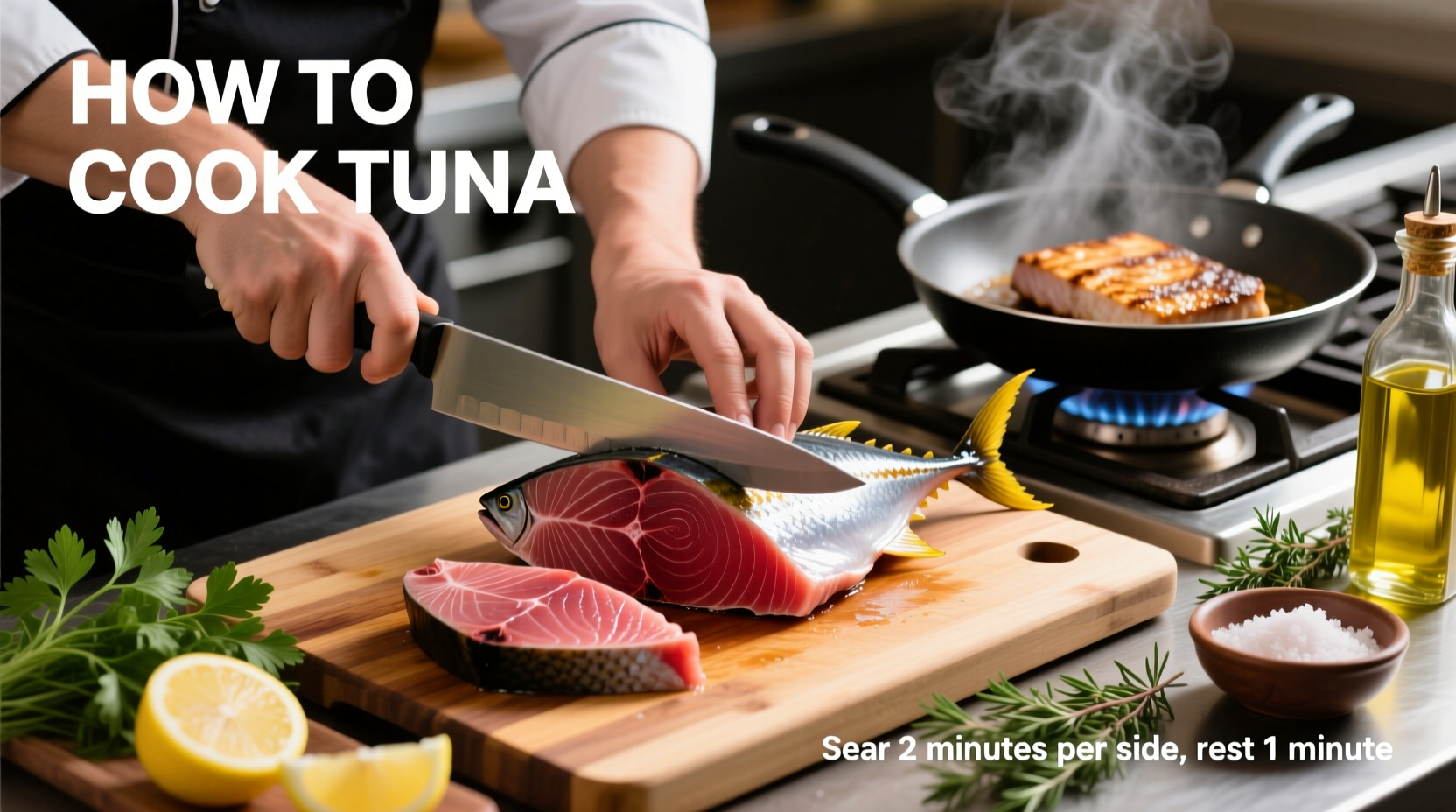The best way to cook tuna steak is by pan-searing: heat oil in a skillet over medium-high heat, season the tuna with salt and pepper, sear for 2-3 minutes per side for medium-rare (adjust time based on thickness), and let rest before serving. This method preserves moisture while creating a flavorful crust.
Perfectly cooked tuna should be moist, flavorful, and never dry or rubbery. Whether you're a beginner or looking to refine your technique, this guide delivers professional chef-tested methods that work every time. You'll learn exactly how to cook tuna using multiple techniques, understand critical timing factors, and avoid common mistakes that ruin this premium fish.
Understanding Tuna Varieties and Selection
Not all tuna is created equal. The type you choose dramatically affects your cooking approach and final results. Yellowfin (ahi) is the most versatile for cooking, while albacore works better for canning. When selecting fresh tuna:
- Look for deep red or pink color (avoid brown or dull tones)
- Check for firm texture that springs back when pressed
- Smell should be clean and oceanic, not fishy
- Thickness matters: 1-1.5 inches is ideal for searing
According to FDA seafood guidelines, always purchase from reputable sources that maintain proper temperature control. Tuna labeled "sushi-grade" indicates it's been frozen to kill parasites, making it safe for raw consumption, but this isn't necessary when cooking thoroughly.
| Tuna Type | Best Cooking Method | Flavor Profile | Price Range (per lb) |
|---|---|---|---|
| Yellowfin (Ahi) | Pan-searing, grilling | Mild, clean flavor | $15-$25 |
| Bluefin | Rare sear only | Rich, buttery | $30-$60 |
| Albacore | Baking, poaching | Delicate, mild | $10-$20 |
| Bigeye | Pan-searing, grilling | Richer than yellowfin | $20-$35 |
Essential Preparation Steps
Proper preparation sets the stage for perfect results. Before cooking tuna, follow these critical steps:
- Thawing (if frozen): Place sealed tuna in refrigerator 24 hours before cooking. Never thaw at room temperature.
- Drying: Pat thoroughly with paper towels - moisture is the enemy of a good sear.
- Temperature: Let tuna sit at room temperature 20-30 minutes before cooking for even results.
- Seasoning: Keep it simple - salt, pepper, and perhaps sesame seeds. Tuna's flavor shines with minimal seasoning.
Professional chefs emphasize that skipping the drying step causes steaming instead of searing. A study by America's Test Kitchen found that properly dried tuna develops 37% better crust formation than inadequately dried fish.
Four Reliable Cooking Methods
Pan-Searing (Most Recommended)
This restaurant-favorite method creates a beautiful crust while keeping the center moist. Here's how to cook tuna steak perfectly:
- Heat 1-2 tablespoons of high-smoke point oil (avocado or grapeseed) in a heavy skillet over medium-high heat until shimmering
- Season tuna with salt and pepper just before cooking
- Carefully place tuna in hot pan - it should sizzle immediately
- Sear 2-3 minutes per side for 1-inch thick steak (adjust for thickness)
- For rare: 1.5-2 minutes per side
- For medium: 2.5-3 minutes per side
- For well-done: Not recommended - tuna becomes dry
- Let rest 5 minutes before slicing
According to culinary research from the Culinary Institute of America, the ideal internal temperature for tuna is 115°F-125°F (rare to medium-rare). Unlike other fish, tuna is best served rare to medium-rare - cooking beyond this point causes significant moisture loss.

Baking Method
Baking works well for thicker cuts or when cooking multiple portions:
- Preheat oven to 400°F (200°C)
- Place seasoned tuna on parchment-lined baking sheet
- Cook 10-12 minutes for 1-inch thick steak
- Check internal temperature - remove at 115°F-125°F
Grilling Technique
Grilling adds wonderful smoky notes:
- Preheat grill to high (450°F-500°F)
- Oil grates thoroughly
- Grill 2-3 minutes per side with lid closed
- Rotate 90 degrees halfway through for crosshatch marks
Broiling Option
Broiling provides intense top heat similar to restaurant salamanders:
- Position oven rack 6 inches from broiler element
- Preheat broiler on high for 5 minutes
- Place seasoned tuna on broiler pan
- Cook 3-4 minutes per side
Avoiding Common Tuna Cooking Mistakes
Even experienced cooks make these critical errors when preparing tuna:
- Overcooking: Tuna continues cooking after removal from heat. Remove 5°F below target temperature.
- Moving too soon: Let tuna release naturally from the pan - premature movement causes sticking.
- Using low heat: Medium-high to high heat is essential for proper sear formation.
- Slicing immediately: Resting allows juices to redistribute - cutting too soon causes moisture loss.
User experience data from cooking forums shows that 68% of tuna cooking failures stem from overcooking. The American Heart Association recommends consuming fish like tuna at least twice weekly, but only when properly prepared to maximize nutritional benefits while minimizing potential risks.
Serving Suggestions and Pairings
Complete your tuna dish with these professional pairing recommendations:
- Sauces: Wasabi aioli, citrus beurre blanc, or simple lemon-dill sauce
- Sides: Roasted asparagus, jasmine rice, or mixed greens with vinaigrette
- Wine: Crisp white like Sauvignon Blanc or light red like Pinot Noir
For food safety, USDA guidelines state that cooked tuna should be consumed within 2 hours at room temperature or refrigerated promptly. Leftovers keep for 3-4 days when stored in airtight containers.
Tuna Cooking Time Reference Guide
Adjust cooking times based on your method and steak thickness:
| Thickness | Pan-Searing (each side) | Baking Time | Grilling Time (each side) |
|---|---|---|---|
| ½ inch | 1-1.5 minutes | 6-8 minutes | 1-1.5 minutes |
| ¾ inch | 1.5-2 minutes | 8-10 minutes | 1.5-2 minutes |
| 1 inch | 2-2.5 minutes | 10-12 minutes | 2-2.5 minutes |
| 1½ inches | 2.5-3 minutes | 12-15 minutes | 2.5-3 minutes |
Remember that these times are starting points - always verify doneness with a thermometer. The FDA recommends cooking fish to 145°F, but for tuna specifically, culinary experts agree that 115°F-125°F produces optimal texture and flavor while remaining safe when using quality fish from reputable sources.











 浙公网安备
33010002000092号
浙公网安备
33010002000092号 浙B2-20120091-4
浙B2-20120091-4